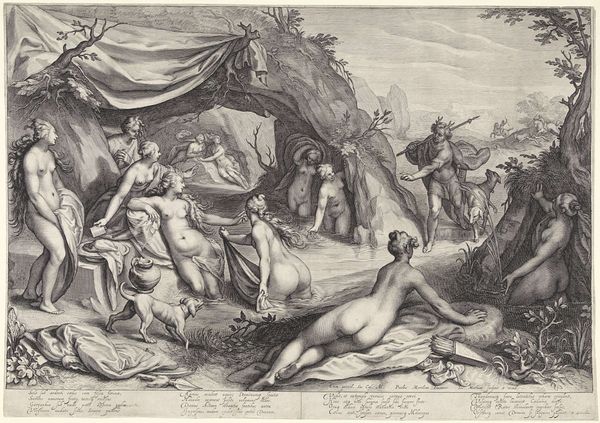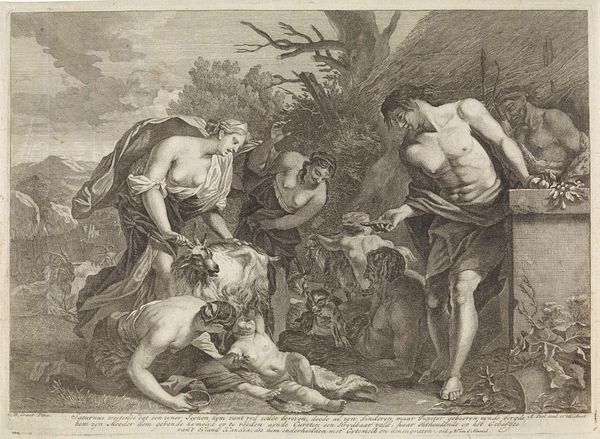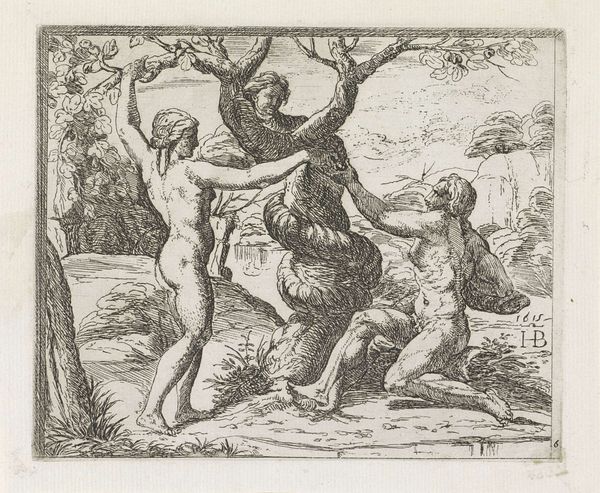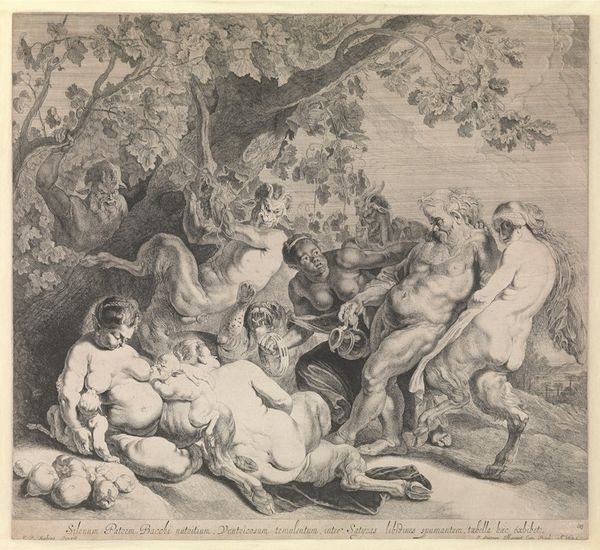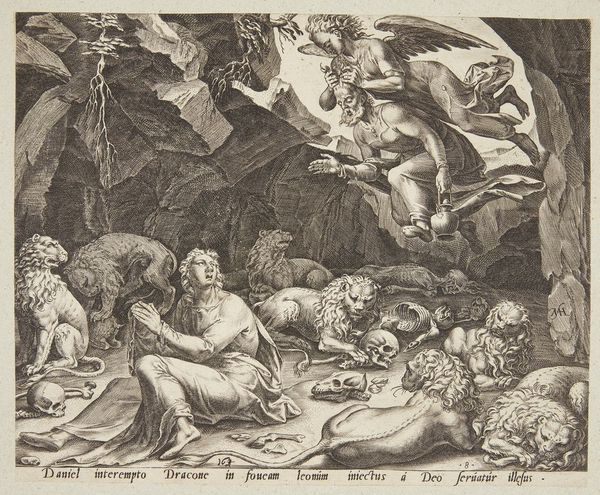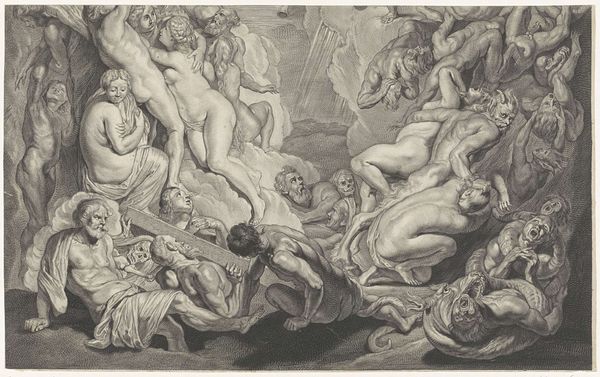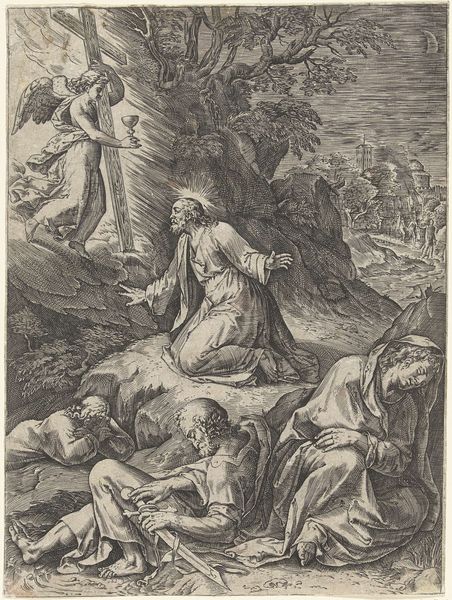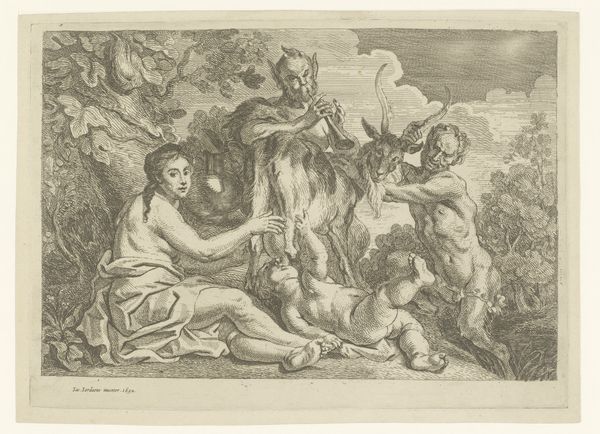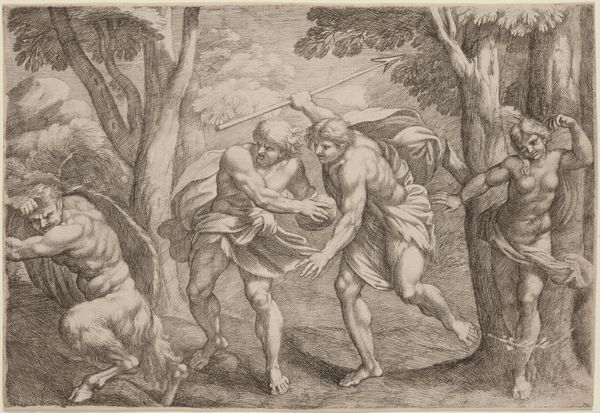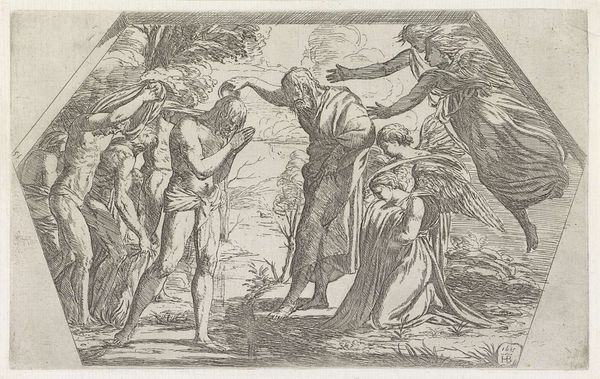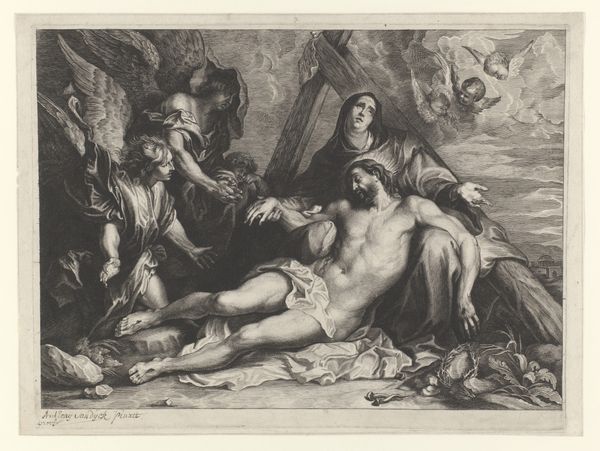
print, engraving
#
allegory
#
baroque
# print
#
history-painting
#
nude
#
engraving
Dimensions: height 284 mm, width 360 mm
Copyright: Rijks Museum: Open Domain
Curator: So, we’re looking at "Jupiter abducting a Woman while Juno watches," an engraving from the late 17th century, attributed to an anonymous artist, here at the Rijksmuseum. Editor: It's quite striking. The detail achieved in the engraving is incredible. There's so much implied texture and form achieved through line work. What particularly catches your eye in this print? Curator: As a materialist, my focus shifts towards the means of production, particularly the social context within which this engraving would have been made. Engravings, unlike unique paintings, allowed for a reproduction and wider circulation of imagery. Consider the implications of democratizing access to mythological scenes, especially those depicting the power dynamics inherent in stories like this abduction. Who was consuming these images, and how did the process of printmaking itself affect their reception? Editor: That’s a really interesting way to frame it. I hadn’t considered the role of reproduction in shaping its meaning. How does the specific technique of engraving play into your interpretation? Curator: The engraver's skill, though anonymous in this case, becomes a crucial element. Notice the controlled lines, the precision needed to create these tonal variations. It speaks to the highly specialized labor involved. Furthermore, engravings were often used as reproductive prints after paintings. This begs the question, is this simply a copy, or does the act of translation through a different material – metal, ink, and paper – introduce a new layer of interpretation and meaning? Consider how the mass production alters its perceived cultural value and challenges the art status from "high art" to... something else? Editor: I see what you mean. Thinking about the materials and production really opens up questions about accessibility, labor, and the definition of art itself during that time. It's a completely different way to think about this image. Curator: Precisely. Material concerns help to challenge the canon narrative of pure aesthetic appreciation of art by exploring socio-historical backgrounds. Editor: That’s a great way to put it. Thanks for sharing that perspective.
Comments
No comments
Be the first to comment and join the conversation on the ultimate creative platform.
